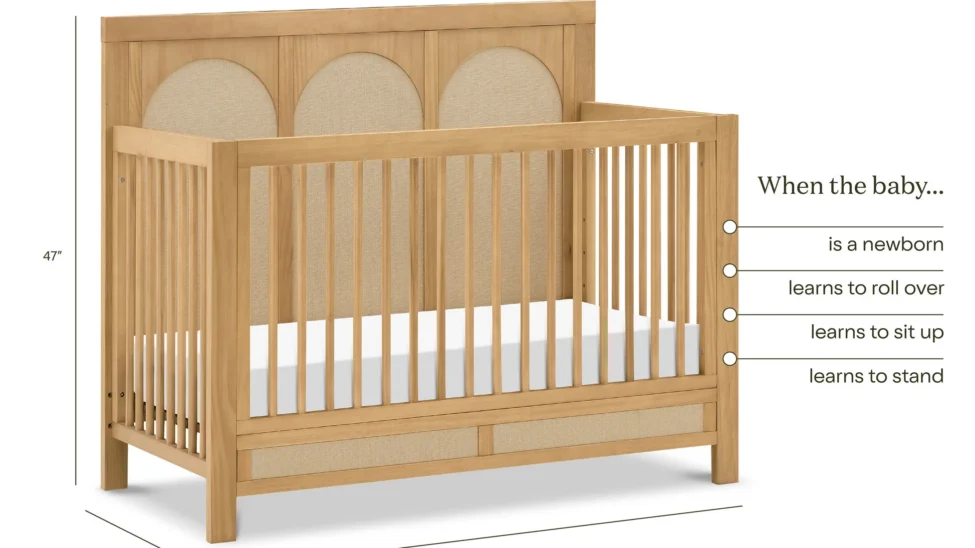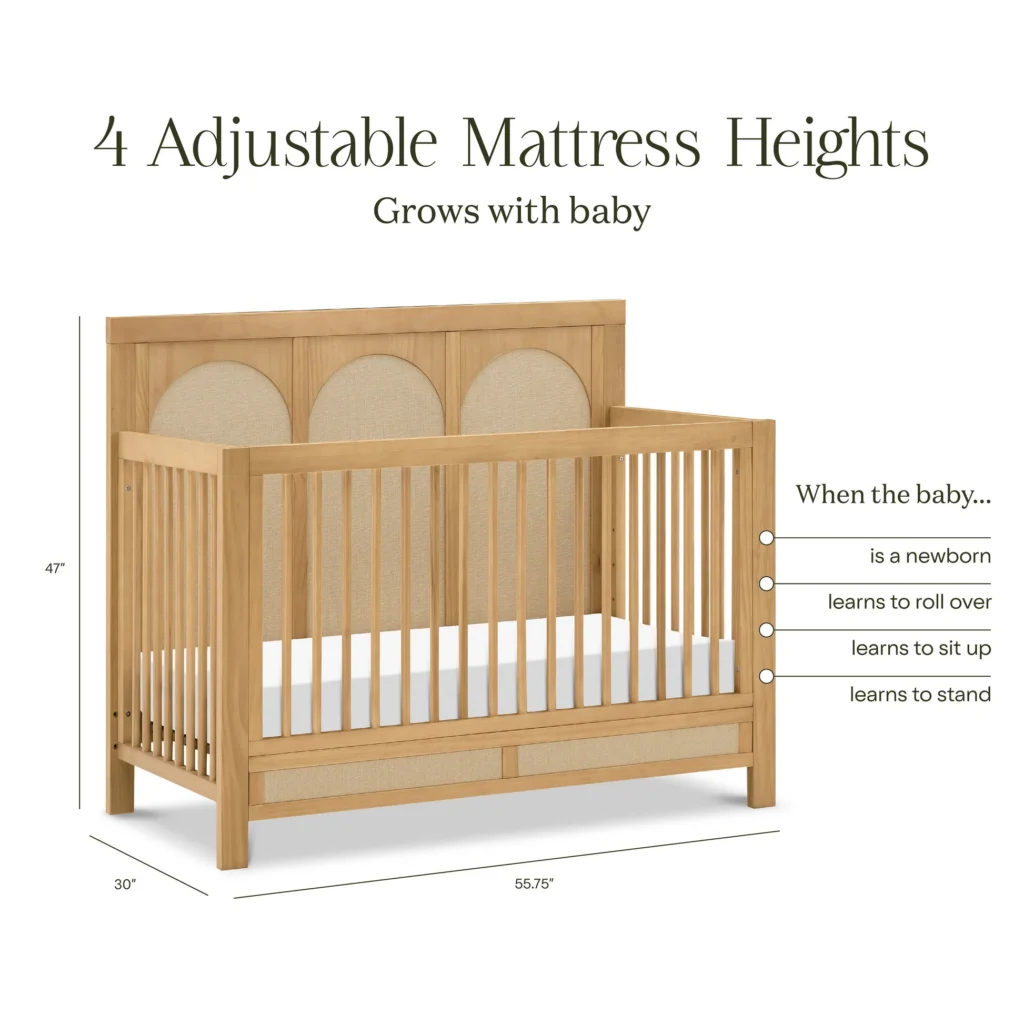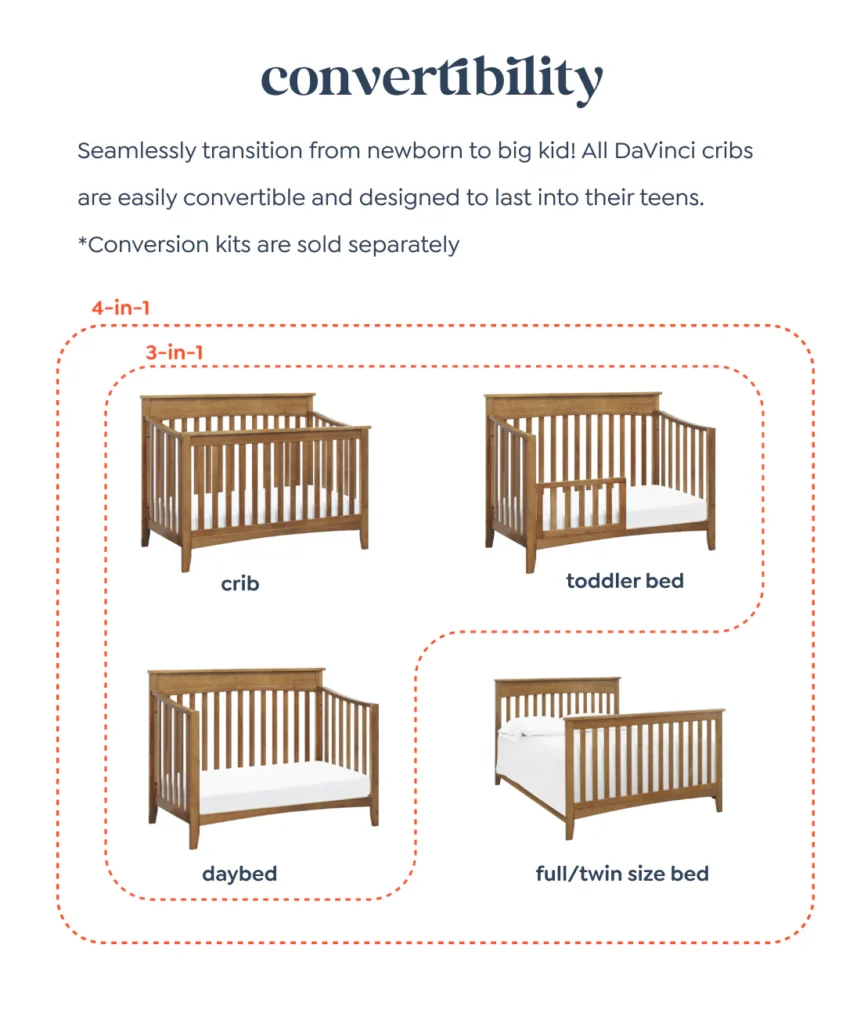
Not Just Fancy – Why Adjustability Actually Helps
When I was expecting my first child, I remember standing in a baby store, overwhelmed by options. One crib had a sign: “3 height settings!” I blinked at it. That’s it? But a few months later, when I was bending over a sleeping baby with a c-section scar, I understood. It mattered.
Cribs with adjustable features aren’t gimmicks. They make everyday care — feeding, lifting, soothing, midnight sheet changes — noticeably easier. They also grow with your child, from those curled-up newborn nights to the wobbly toddler mornings.
I often tell parents: a good adjustable crib won’t do the parenting for you, but it will stop adding to your stress.
What’s Worth Adjusting – And What’s Just Extra
Not all adjustable features are made equal. Some are gold (hello, mattress height settings), others look great on paper and collect dust in real life.
Let’s talk about the essentials first. If you can adjust the mattress height, that’s a win. You’ll start high when baby is tiny and barely moving. Then, when rolling and pulling up begin — usually around 6 months — you can lower the mattress to keep them safe. That one change alone can keep your back intact.
Convertible cribs are another strong contender. Many adjust into toddler beds or daybeds, giving you more years out of one piece of furniture. Just be sure the conversion kit is included. (Surprise: it often isn’t.)
One client told me she bought a fancy crib with adjustable side rails — but the rails were so noisy, she stopped using them altogether. Simplicity wins.
How It Affects Sleep — The Real Gamechanger
We often talk about baby sleep like it’s this mysterious science. But sometimes, better sleep starts with the right crib. Adjustable features can help in small but crucial ways.

During sleep training, for instance, having the mattress lower gives babies the stability to practice getting comfy on their own. And for you — being able to soothe without waking them with a clunky rail or a deep bend over the bars? That’s sanity-saving.
In my practice, I’ve seen parents dread night feedings less just because they didn’t have to dislocate a shoulder getting the baby out. That kind of ease translates into calmer nights and fewer tears — on both sides.
What to Look for — and What to Avoid
Here’s a truth I wish I’d known earlier: just because a crib looks minimalist and sleek doesn’t mean it functions well. When choosing, go beyond the showroom look.
- Check how easy it is to adjust the mattress — does it require tools?
- Are the mechanisms smooth or clunky? Try them in-store.
- Does the adjustable part feel sturdy? Wiggle it. If it wobbles — walk away.
And don’t underestimate the wheels. I know it sounds basic, but if the crib moves easily (and locks securely), it saves you time when rearranging the nursery or cleaning behind it. That’s a feature I didn’t know I’d use until I had to fish out 17 pacifiers in one week.

One Family, One Feature, a Big Change
I worked with a mom of twins who was juggling two bassinets, no sleep, and a bad back. She was skeptical when I suggested investing in one adjustable crib — the kind with a wide opening and height settings. We tried it for naps first. Then, bedtime.
Within days, she was getting longer stretches of rest. The twins were more settled because she wasn’t awkwardly lifting and shifting them around. She could reach in quietly and gently without waking the other. Her words, not mine: “That crib saved my shoulders and my sanity.”
What People Get Wrong About Adjustable Cribs
Let’s clear something up. An adjustable crib doesn’t mean complicated or mechanical. You don’t need an engineering degree to use one. Most have basic, parent-friendly mechanisms. And no, they don’t break more often than regular cribs.
Complex doesn’t always mean better. A well-made crib with one smart feature beats five flimsy ones every time.
There’s a myth that adjustable cribs are only for “first-time parents who overthink everything.” I hear that a lot. But seasoned parents are often the ones who know how much these little adjustments matter in daily life.
Is It Worth the Extra Cost?
Let’s be honest: some of these cribs cost more. But if a $50 difference saves your back, reduces wake-ups, and grows with your child — is it really more expensive? Or just better value?
You’re not just paying for furniture. You’re investing in ease, comfort, and longevity. And possibly fewer chiropractor visits.
Who Will Appreciate These Cribs the Most?
If you’re a recovering mom post-birth — yes. If you’ve got a small space and need a crib that shifts easily — yes. If you’re planning for multiple kids — absolutely yes.
But even if none of those describe you, and you just want less hassle during diaper changes or late-night feedings — then yes, adjustable cribs are for you, too.
A Simple Checklist Before You Buy
Here’s what I now check when helping parents shop:
- At least two mattress height settings
- Quiet, sturdy adjustment mechanism
- Non-toxic materials and paint
- Easy-to-convert kit (included is a plus)
- Optional: wheels with lock
You’d be surprised how many cribs check only two of these boxes. Don’t settle.
If I Could Choose Again
I still remember my second crib — it wasn’t fancy, but it had quiet wheels, a solid mattress height system, and felt like it belonged in our home. That crib moved with us through three apartments and two babies.
If I were buying again, I’d look for function first, aesthetics second. And yes, adjustable features would still be non-negotiable. They helped me be a calmer, more confident parent.
Sometimes, the best parenting tool isn’t a gadget or app — it’s a crib that just works with you.


